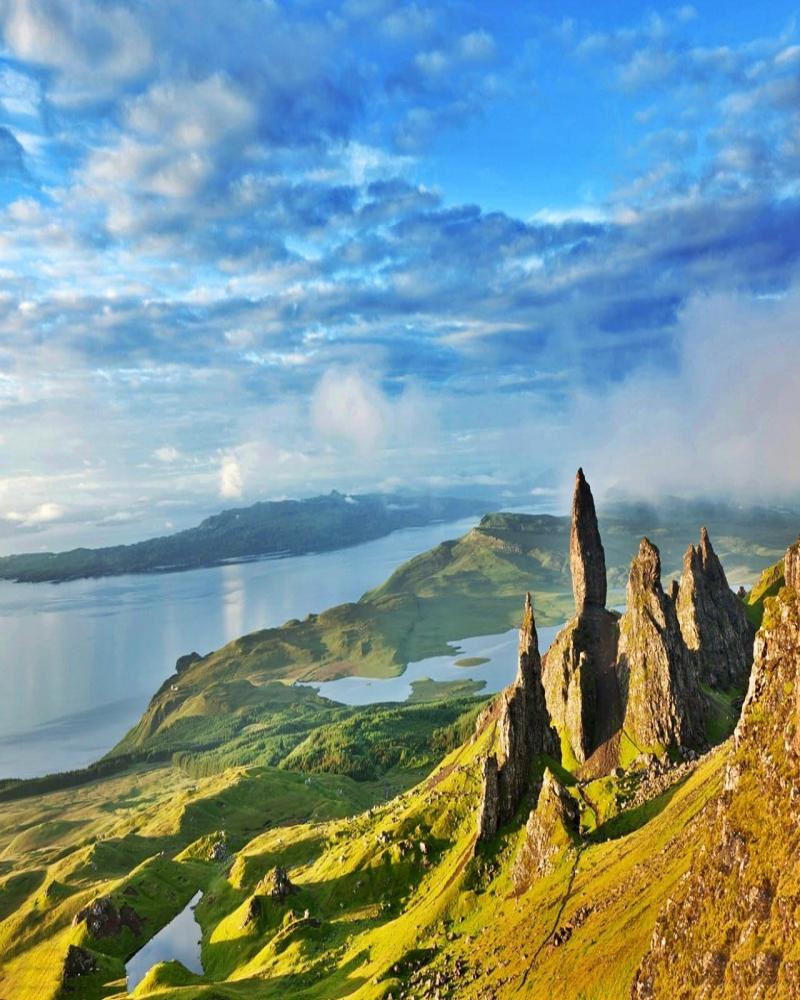Hebrides and Small Islands
Scotland
Oban > Rum > Muck > Loch Nevis > Eigg > Tobermory > Oban
With the Flying Dutchman we sail to the Small Islands (Muck-Rhum-Eigg) and Skye. On the way we can see many seabirds: gannets, parrot birds, carnivores. And we have good chances to meet dolphins and whale sharks.
“The Small Isles” is still a completely un-written page for many visitors to Scotland, as many international guests have such popular islands as Skye, Iona, Islay and Arran. But these four islands of Rum, Eigg, Muck and Canna have much to offer their visitors. If you are interested in breathtaking coastal landscapes, untouched nature, secluded sandy beaches and idyllic retreats, you will find your holiday in all the islands. In addition, each of these four islands has something special to offer to its guests. The island of Rum is a paradise for families, and the impressive Kinloch Castle, while the island of Eigg attracts archaeologists and ornithologists. The island of Muck is the smallest of the islands and can therefore be easily explored on foot or by bicycle. Canna is finally the westernmost of the Small Isles and is run by the National Trust for Scotland as a farm, but also offers a café-restaurant an excellent meeting place for guests and inhabitants of the island.
Gesproken talen aan boord: Dutch, German, English

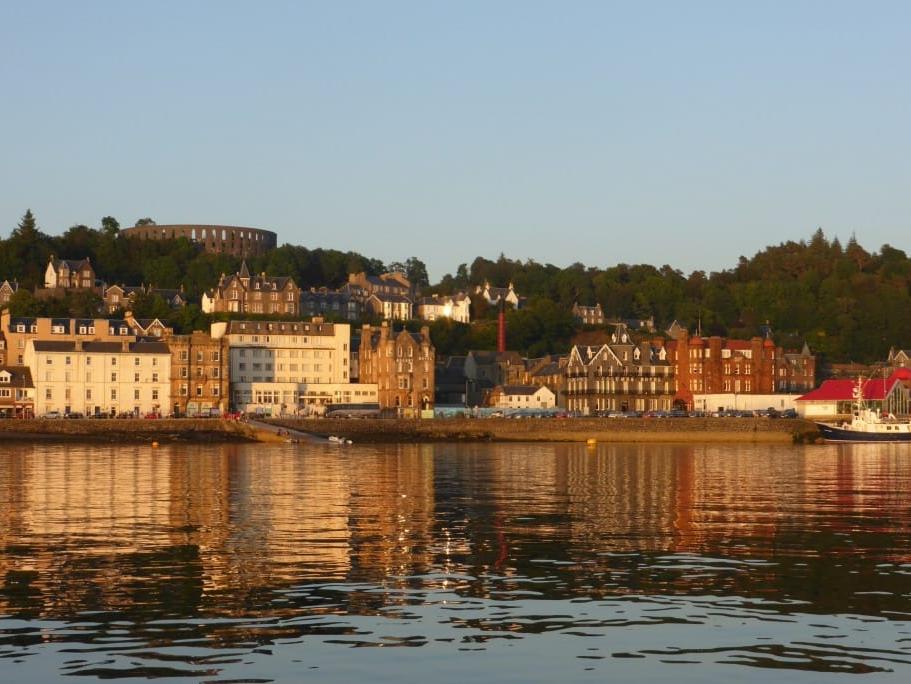
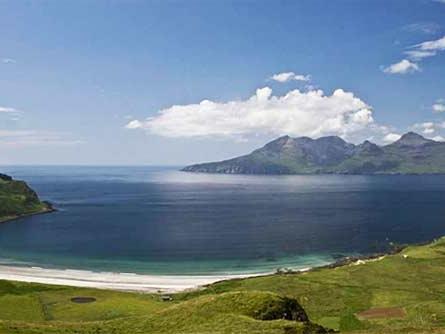
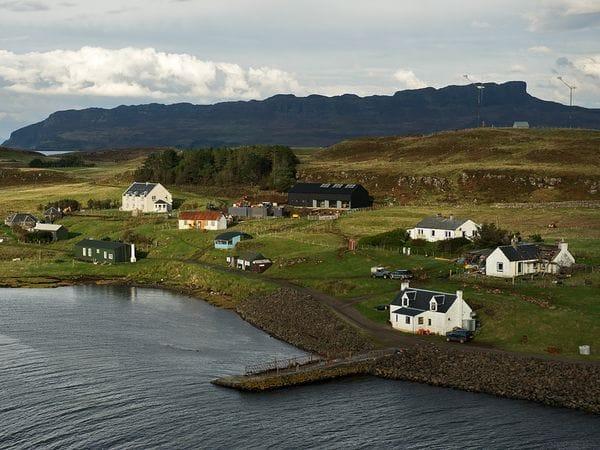
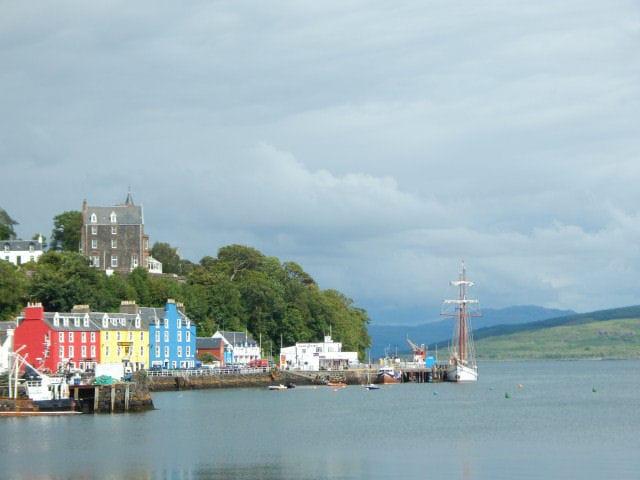
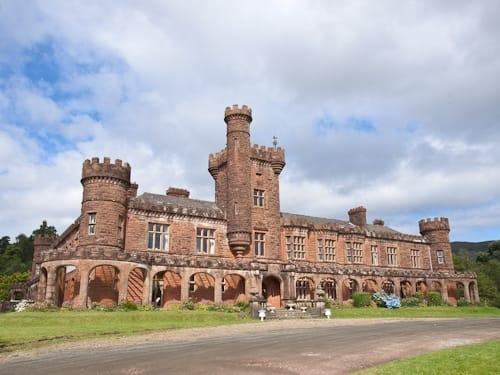

Embarkation on the first day of travel at 6 pm in Oban
Disembarked on the last day of travel at 10 am in Oban
Prices :
We have divided the prices into two categories because our double cabins are different in size. All prices are per person when staying in:
- Standard cabin ………………………………………€ 1195, –
- Standard plus cabin ……………………………….€ 1325, –
- Individual use of the cabin ………………………€ 1795,-
The price includes:
- Cabin (shared) with shower and toilet
- Bed linen and towels
- Crew, consisting of Captain, First mate and Cook
- Zodiak to go ashore
- Half board including coffee, tea, milk and juice at meals.
In the case of half-board, you will also be able to discover local specialties on board, in addition to the catering on board.
exclusive:
- Arrival and departure to / from the ship
- Personal expenses
- Possible additional entrance fees and drinks
- Drinks on board
We travel with an international travel company. Our guests come from the Netherlands, Belgium, Switzerland, England, Germany and Scotland. The crew of the Flying Dutchman comes from the Netherlands
Route planning
Day 1: Arrival to Oban
You arrive in Oban, a cozy fishing village on a wonderful location in a beautiful bay. If you arrive earlier, you can leave your luggage on board and have a look in the village.
Oban is also known as the Pearl of the West Highlands, with its winding alleys and picturesque bay full of yachts, ferries and small fishing boats. High up is McCraigs Tower, an unfinished replica of the Coliseum in Rome, dating back to the late nineteenth century. The total scope of the buildings is over 192 meters and in some places the walls are over fourteen meters high.
We are expected to be located at the North Pier, less than a hundred yards from the Oban whiskey distillery. In the evening you will be welcomed on board were you will get to know the crew and the other guests. Afterwards there is a nice welcome dinner and we raise the glass on a beautiful trip in Scotland.
Day 2: Muck
After leaving Oban, we sail through the sound between Morvern and Mull, overlooking the rugged mountain landscape. On the way we pass the magnificently restored Duart Castle, an imposing sight. The goal is Muck. The island of Muck is only 3 km long and 1.5 km wide and is the smallest of the “Small Isles” with 38 permanent residents. The isle can be easily manipulated and has a fertile hillside landscape with white sand beaches. The highest elevation is Beinn Airein with just under 138 meters and therefore quite easy to climb. But the challenge is much bigger when you climb the hill from the west side. Further interesting impressions can be found on hikes on horse at low water, as many water birds as well as parrot birds nest on the island. You can also visit Caisteal an Duin Bhain, a prehistoric fortress.
About 40 bird species regularly use Muck as a breeding ground, many more come at irregular intervals. Because of the Gulf Stream life in the water is particularly rich and varied. From time to time you can see some seals at the beaches, and in the late summer months you can even see a huge shark. A popular motif is the Highland Ponies, which are bred here in small style.
Day 3: Island Rum – natural diamond in the Atlantic
Rum is similar in its form to a rhombus and is the largest of the “Small Isles” with 12 sq km. Their seclusion and impressive silhouette exude a very special fascination to their visitors. The island offers a wide range of hiking trails, starting with short distances up to the summits of the Rum mountains, where you will meet a spectacular animal world with eagles, parrot dummies, deer and the hardened rum ponies. But also many other leisure activities like cycling, fishing, kayaking and canoeing are just as possible as the game and hunting. Rum inspires scientists worldwide with its unique geology, including the core of an ancient volcano that formed the now visible Rum mountains. In addition, Rum was appointed a national natural conservation area in 1957 as an important part of natural heritage. Today, it is owned by “Scottish Natural Heritage”, the agency that has written the conservation of natural treasures in Scotland.
One of the most popular day trips is a guided tour of Kinloch Castle, giving visitors a fascinating insight into the life of the Bullough family who built the castle between 1897 and 1900. The castle houses a “orchestrion” made in Germany, which imitates the sound of a whole orchestra by scanning punched paper rolls. The instrument was made around 1900 by Imhof & Muckle of Vohrenbach near Baden and of the three still existing, this is the only still functional and still plays today for the audience. To the west of the island is the Harris Mausoleum, built by the Bullough family in the style of a Greek temple in column optics. The monument is located in the direction of the thundering Atlantic and offers a fantastic panorama view of the unique mountain landscape of the island.
Rum is also a shelter for many animals, and trained gamekeepers offer many activities, walks and talks that deal with the great variety of flora and fauna. Interested friends of nature even have the opportunity to work as volunteers during their stay. There is a small but lively community of 40 permanent residents. A trust is the owner of the country around Kinloch Village and has plans for further development. Next to the community center is a well-stocked small shop as well as a tea room, which during the summer month has homemade cakes, delicious lunch and other small refreshments on offer. On the island there is also a shop selling art and a small photo gallery.
Day 4 & 5: Skye
Skye is a truly magical place. It is the largest island of the Inner Hebrides and home to some of Scotland’s most famous landscapes. This island will inspire you in many ways, with its mountain chains, kilometers of breathtaking coastal lines.
We visit the famous Talisker brewery and by bus you can discover a large part of Skye.
Day 6: Eigg
We sail to Eigg, a Hebridean island off the Scottish coast. In the south, the Sgurr, 400 meters of rugged primary rock, rises into the sky. Birds trill in its green foothills. Dwarf yellow swallows weigh themselves in a gentle breeze. Every day, a dozen tourists come across from the mainland and walk four or five hours before the ferry leaves. The island is a place where one looks for a healing world; Just over 60 people live here.
Day 7: Tobermory
After a nice breakfast we set sail to Tobermory with its beautiful colored houses on the water and its famous whiskey distillery. In Tobermory you can visit the whiskey distillery where you can get a guided tour, the small Tobermory Museum and the Marine Exhibition where attention is paid to the local waters and the activities in the harbor.
Day 8: Oban
We’re sailing back to Oban. We enjoy the untouched, wild nature of the Scottish islands. The rugged beauty of Mull, the silence on the water, the indescribable landscape, the jagged coast with its surprising bays, the quiet fishing villages and the magnificent view of the islands in the distance.
Day 9: Oban
Unfortunately, our trip to the Small Islands & Skye ends after an eventful week. After a good breakfast, it’s time to say goodbye to the Flying Dutchman and his crew.
Flying Dutchman
Bouwjaar 1903
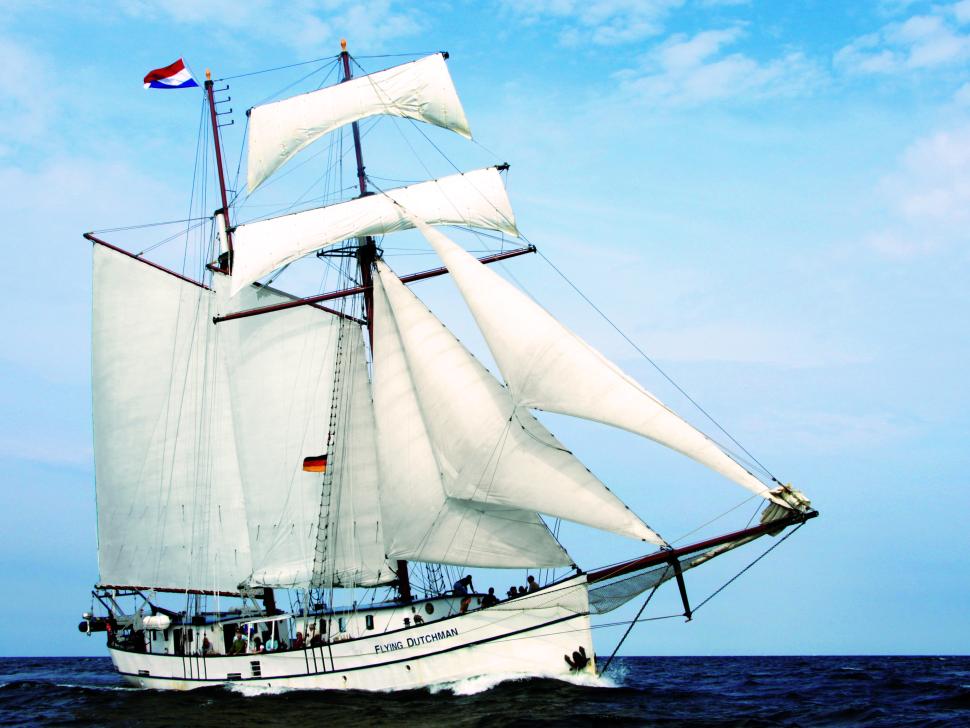
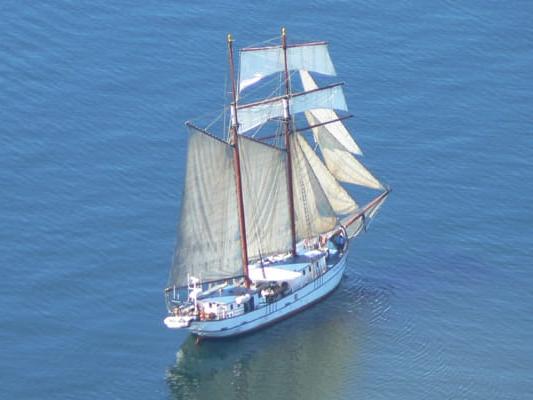
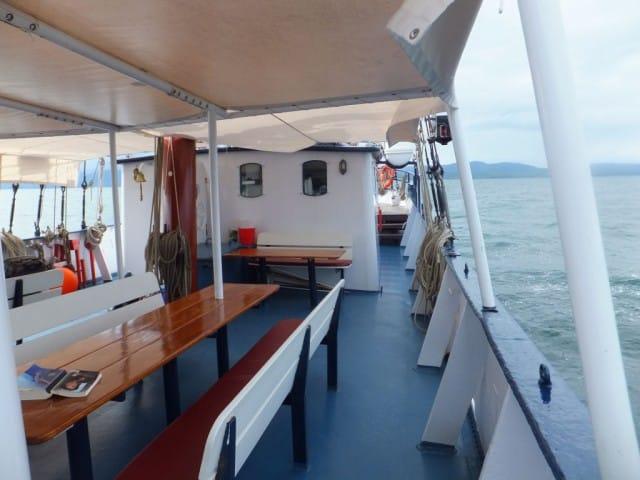
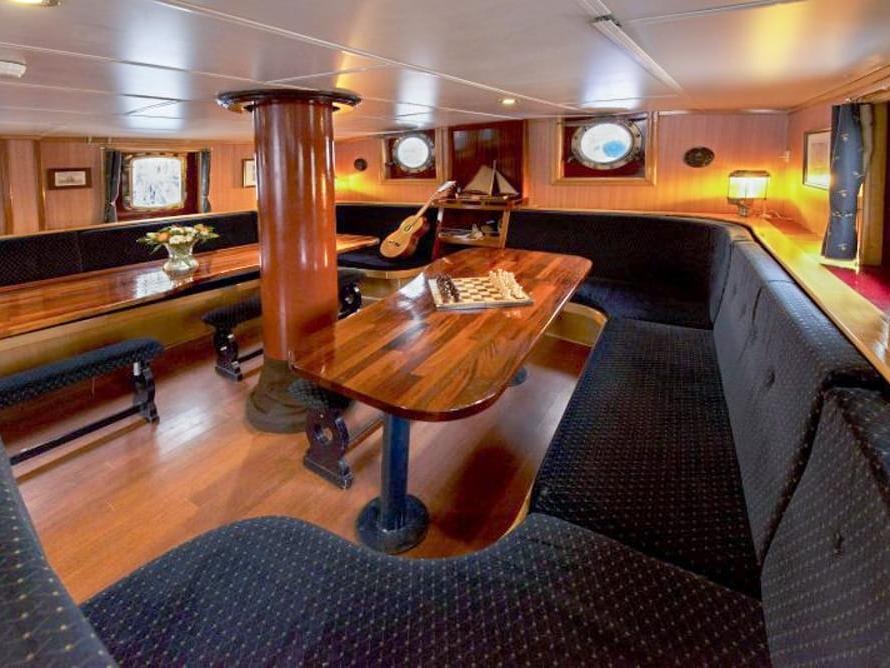
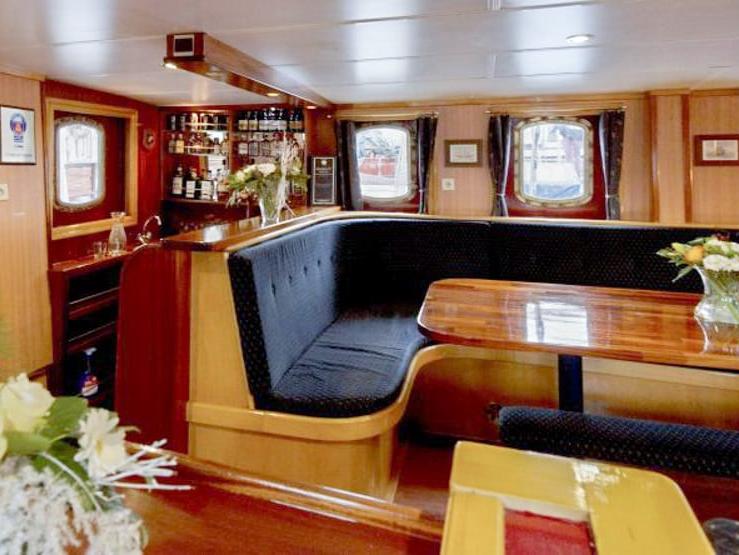



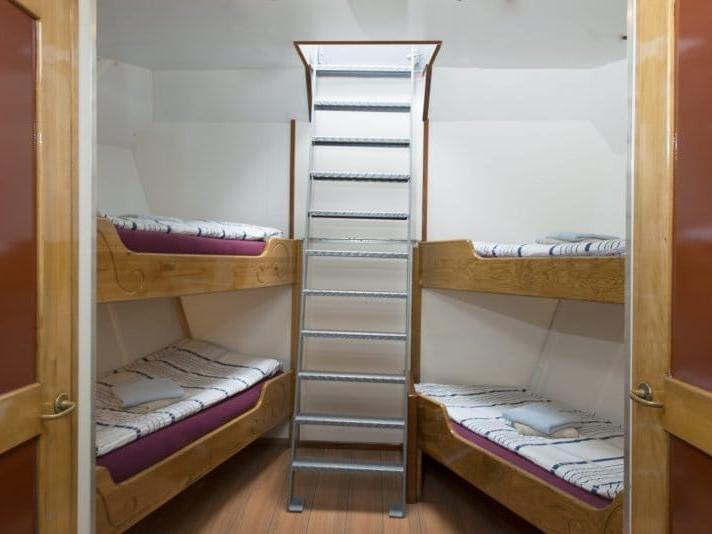
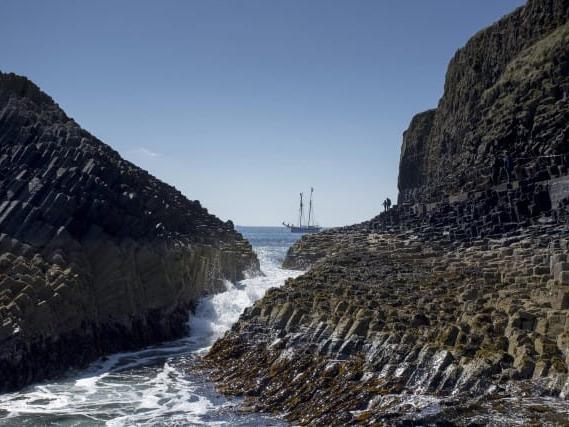
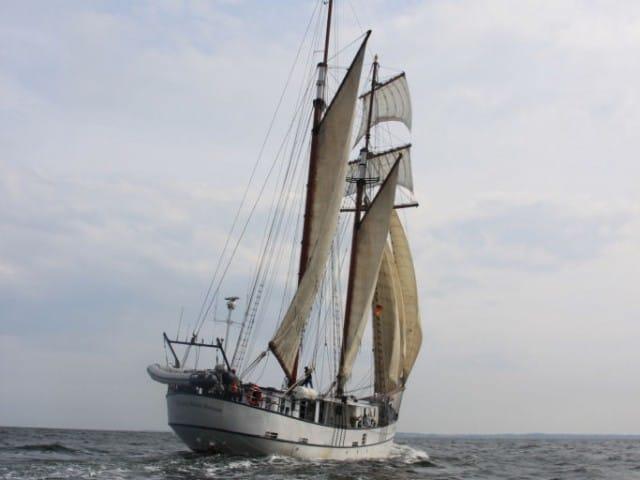

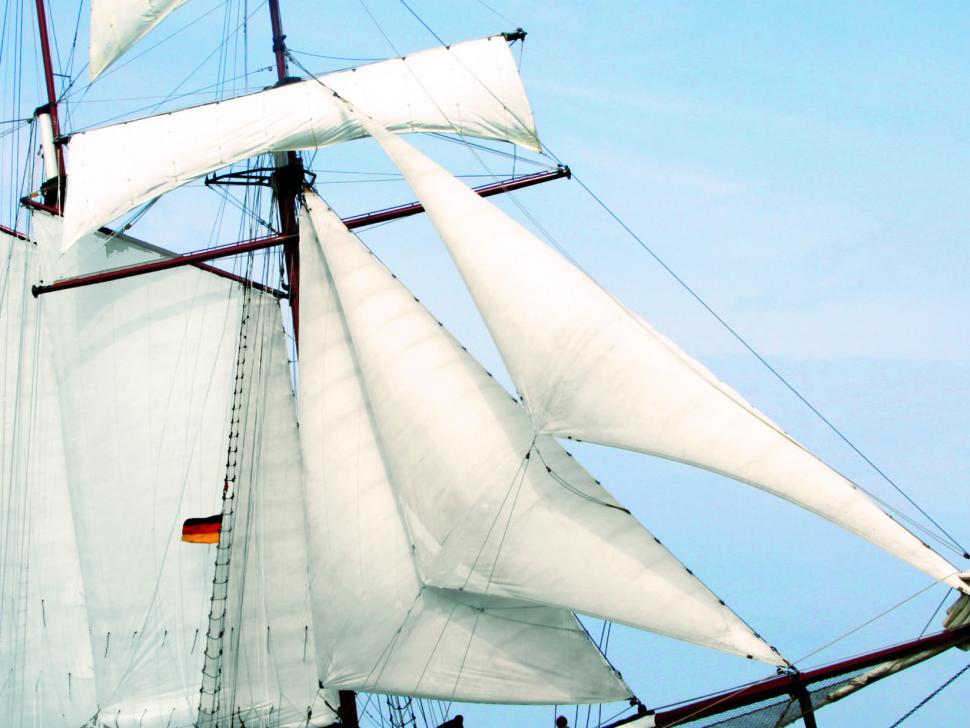
Sailing vessel The Flying Dutchman
The Flying Dutchman is built in 1903. In 2004 Klaas bought this ship and reconstructed it in order to serve as a passengers’ ship that is able to sail the international waters. The ship has a worldwide license according to international safety rules and the ship has been outfitted with the latest navigation and communication systems.
The interior is warm and cosy. The mahogany wood adds to the maritime atmosphere. Refreshments can be found at the bar which is provided with a beer tab. Each cabin has its own bathroom with toilet and shower. Outside you will find plenty of spots to sit, relax and enjoy the passing scenery.
